As we analysed for April’s Total Football Analysis magazine special, some of Europe’s top sides this season, such as newly crowned Bundesliga champions Bayer Leverkusen, Primeira Liga table-toppers Sporting CP and Serie A leaders Inter have dominated their respective divisions thanks in no small part to each of their intelligent tactical deployment of wing-backs in 2023/24.
The intelligent use of wing-backs is not exclusive to those three sides within Europe or, indeed, in all of world football, however. Another side that have demonstrated the ability to make some gains on their opponents through the effective utilisation of wing-backs so far in the early stages of their 2024 season is Progreso in the Uruguayan Primera División.
Earning promotion from the second tier last season under the tutelage of Carlos Canobbio, Progreso currently sit second eight games into the 2024 league campaign, with their 42-year-old coach’s use of wing-backs playing a vital role in their stunning start to the season.
This tactical analysis piece will provide some analysis of how Canobbio’s wing-backs have been so important to the team’s attacking tactics and success thus far in 2024.
Ball progression
Our tactical analysis will break the role of Progreso’s wing-backs down into different phases of the team’s in-possession play, beginning with the ball progression phase in this section of our analysis.
To kick off this piece, it’s worth noting that Canobbio has primarily set his team up in a 3-4-1-2 shape this term, though he hasn’t exclusively lined them up with three centre-backs, with the 4-2-3-1 also being deployed at times.
Even more than the centre-backs, Progreso’s wing-backs have been the team’s primary outlet for progressive passes during the 2024 campaign thus far; El Gaucho del Pantanoso’s progressive pass map for the current season to date is shown in figure 1, which emphasises the team’s trend of playing the ball out to the wing as they enter the opposition’s half and final third before the wing-backs drive the team forward towards the opposition’s penalty area.
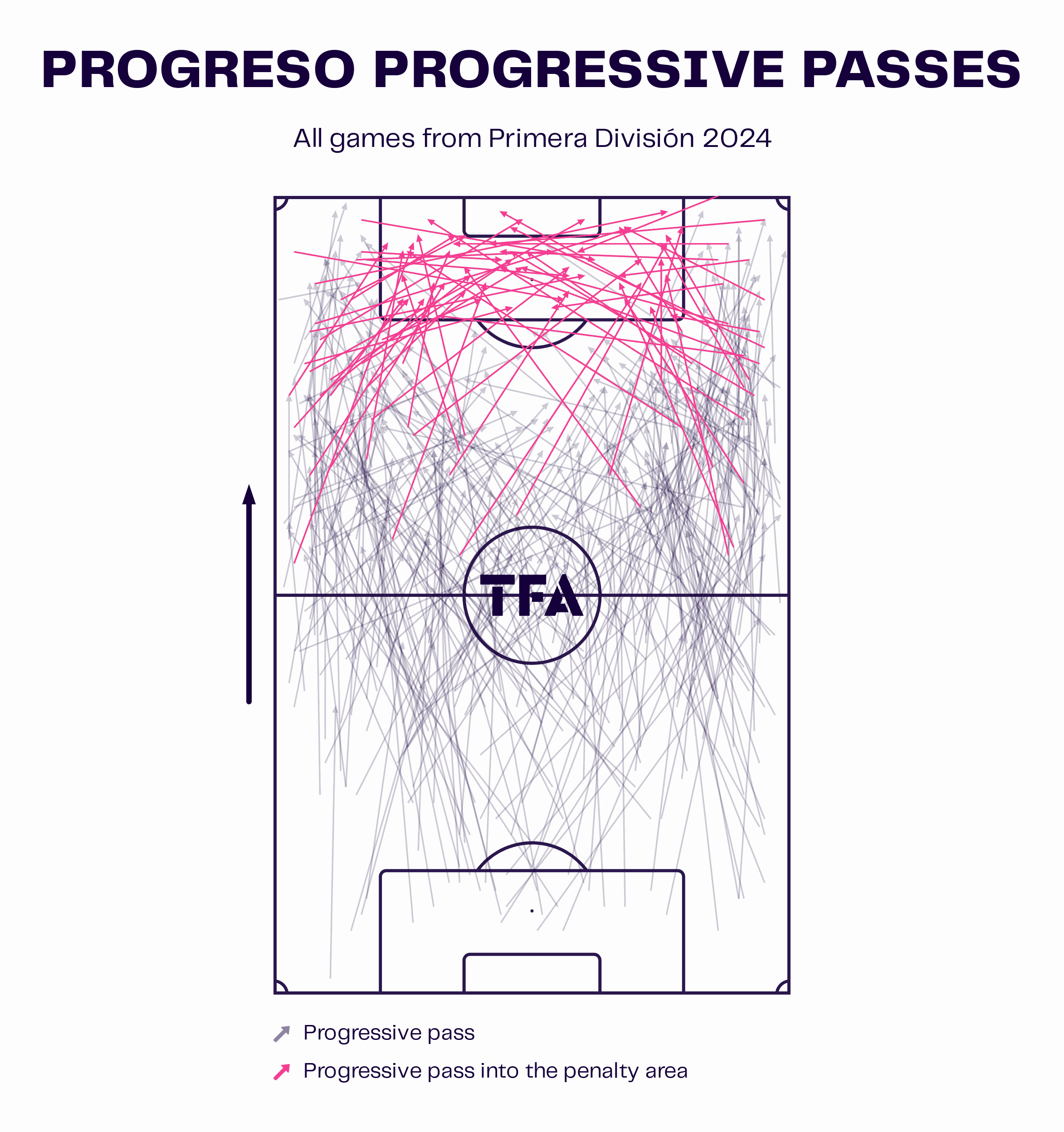
Both sides of the pitch are frequently used by Canobbio’s team in this way, a fairly equal amount.
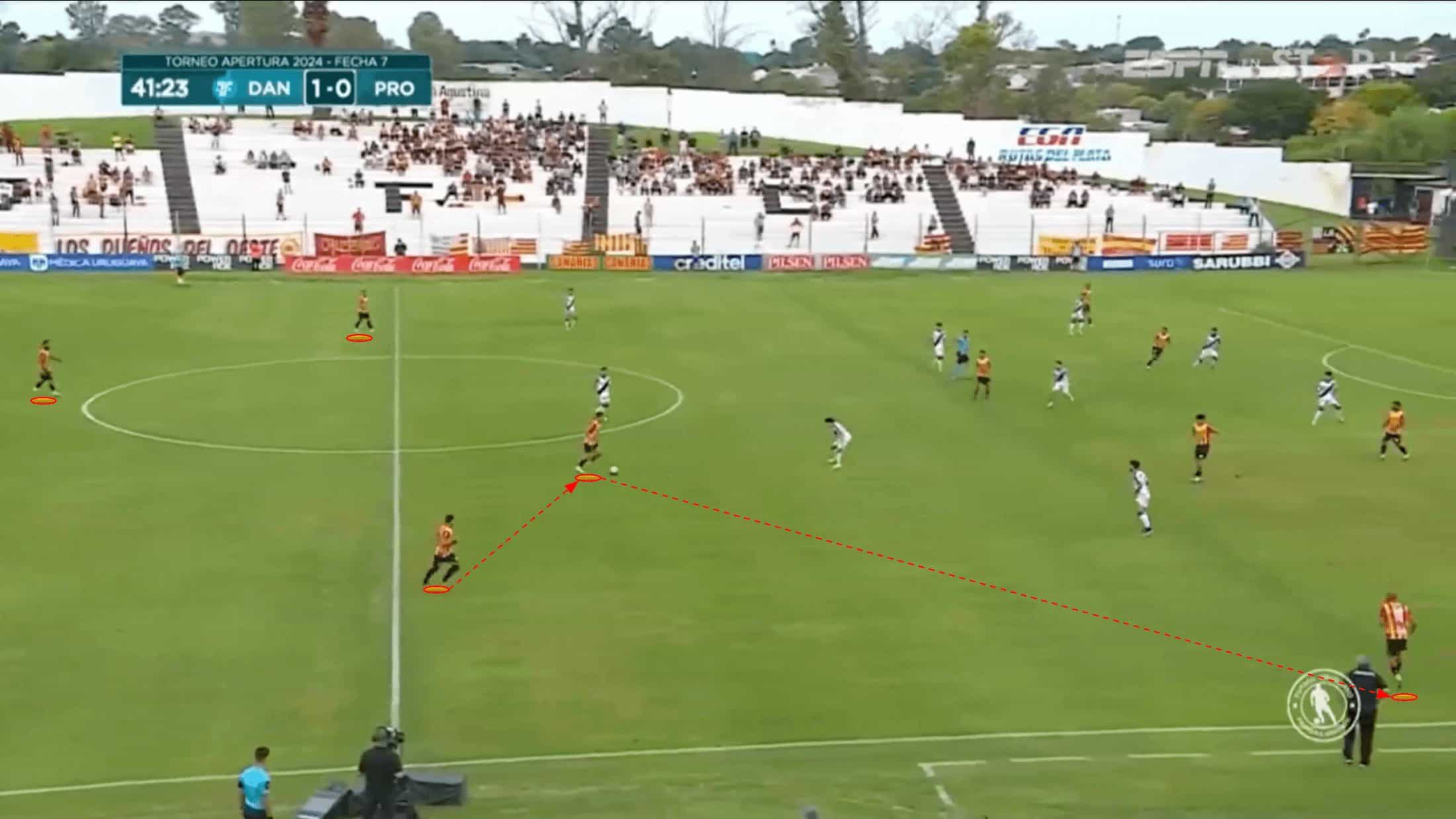
Our next image displays how we could expect to see Progreso shaping up in the ball progression phase, with a base line of three at the back behind a central midfielder who will drop to become the deeper of the two, typically.
It’s common to see El Gaucho del Pantanoso find that deeper midfielder while his midfield partner joins the ‘10’ a line higher just behind the striking duo while the wing-backs push up on the wings.
This structure helps Progreso’s more advanced players provide options to those positioned deeper. Normally, the four advanced players positioned centrally will force the opposition to get narrow in defence, opening up space out wide for the wing-backs to attack. If the opposition opt to cover the wing-backs a bit more closely, this will stretch the opposition and allow Progreso players to find space centrally, but this is less likely than the former option.
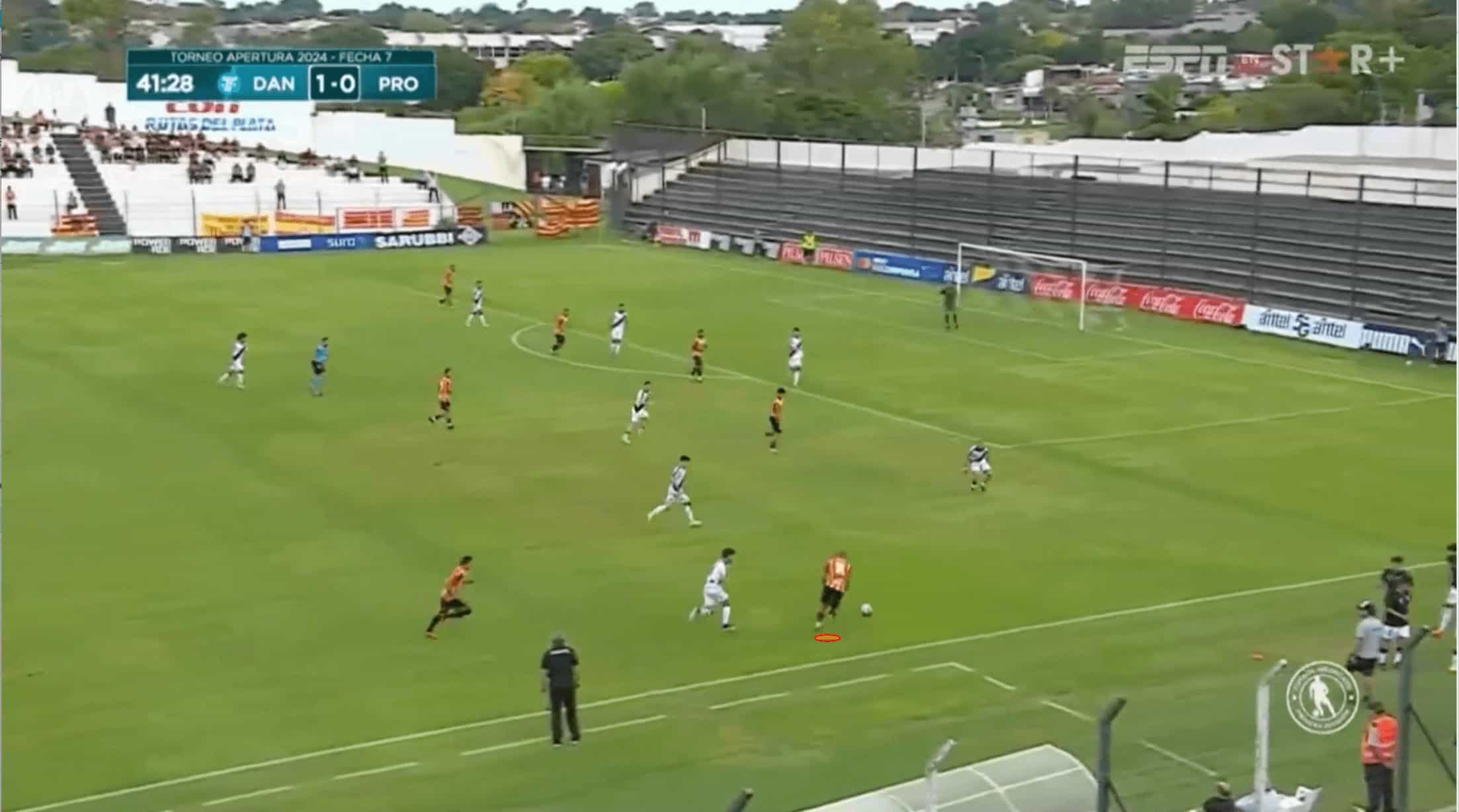
Once the right wing-back is found on the edge of the final third, he receives and turns towards goal, enjoying the choice of attacking the opposition full-back with a dribble or crossing from deep with space to weigh up his ball.
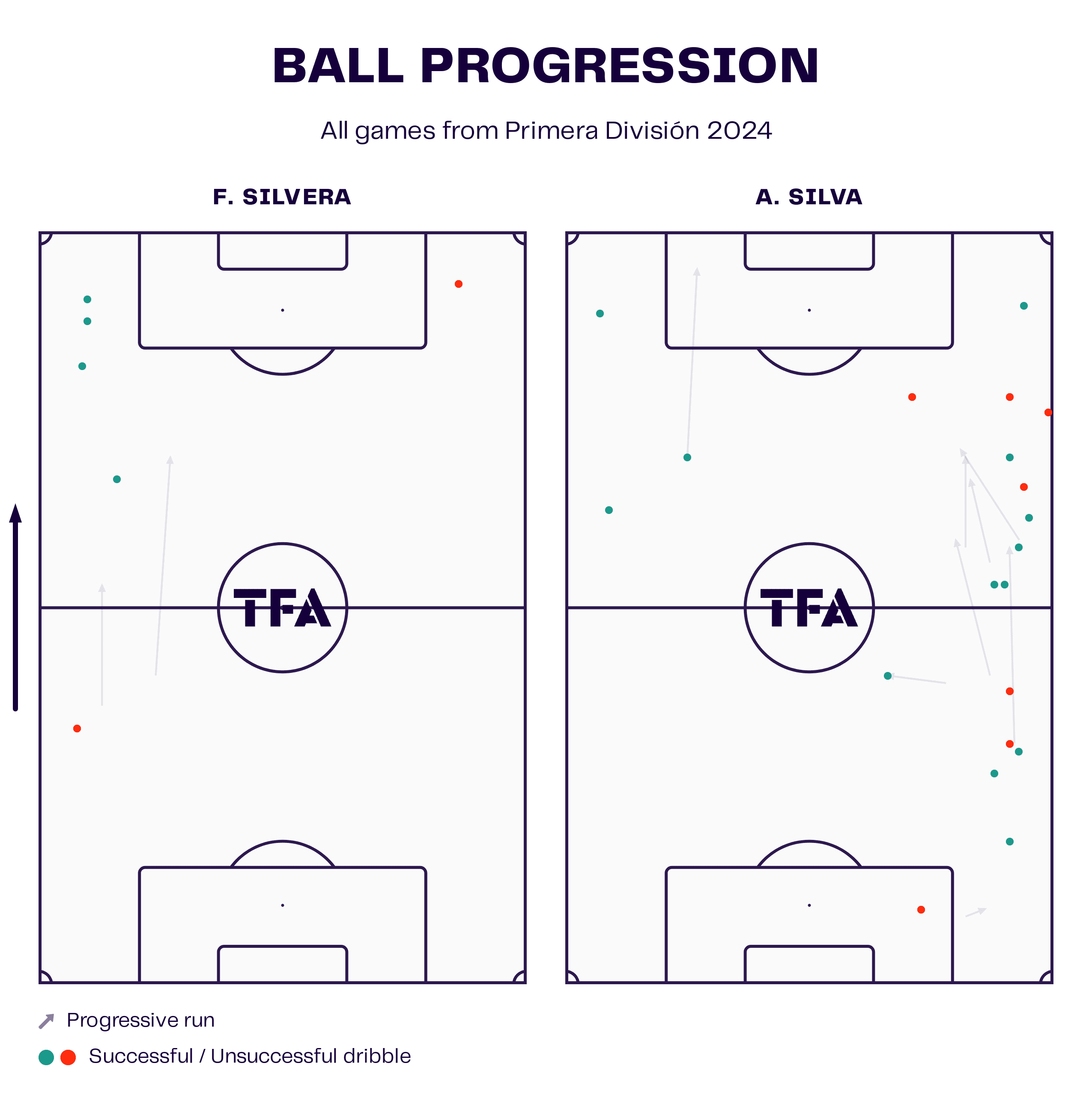
As figure 4 displays, while neither have been the most high-volume dribblers in the world this term, Progreso’s right wing-back Alex Silva is far more likely to attack the opposition full-back 1v1 in this scenario than left wing-back Facundo Silvera. However, both players are still far more likely to cross — their primary weapon of choice.
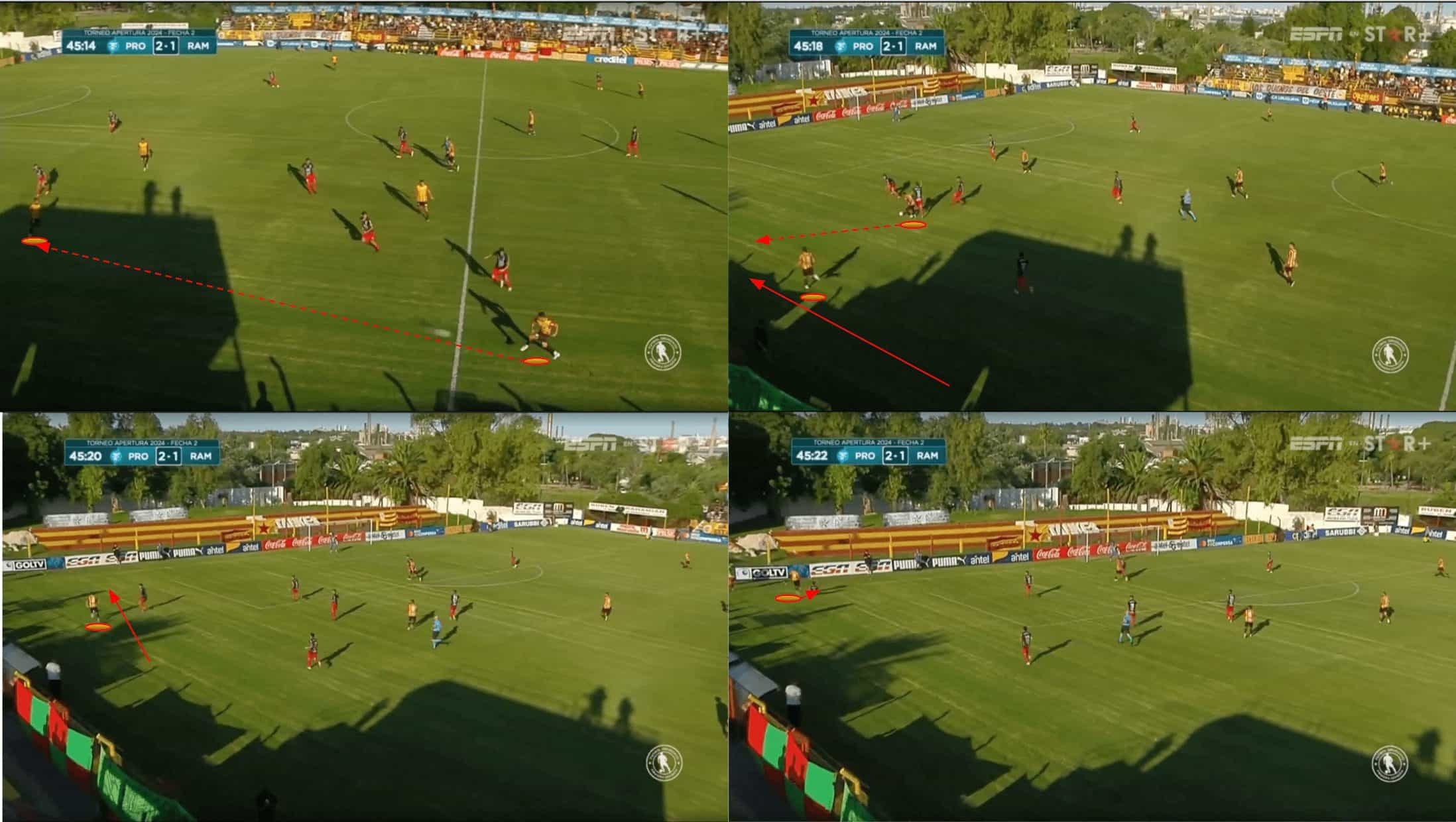
Within the 3-4-1-2 shape, there are no wingers for the wing-backs to partner up with, unlike the 3-4-3 or 3-4-2-1, for instance. The wing-backs can essentially have the run of the wing. However, it is often common to see the strikers offer themselves as passing options for the wing-backs in quite wide areas, like we see in figure 5, with the left forward dropping to make himself a passing option for Silvera.
The forward dropped out onto the full-back, occupying them and making himself a clear passing option for the left wing-back starting to come under some pressure at the halfway line.
After driving the ball forward to the striker’s feet, however, the wing-back is able to rocket up the wing into space, get in behind the opposition’s backline and, crucially, get onto the receiving end of the forward’s return pass to complete this one-two and progress into a decent crossing position.
Though the cross is ultimately blocked well by the opposition defender, forcing a corner kick, we see a decent example of the relationship that frequently forms between Progreso’s wing-back and striker here in figure 5, which can be very important when it comes to moving play into the final third and getting into good positions for chance creation.
Chance creation
After ball progression comes chance creation, where the team is in the final third, attempting to generate a goalscoring opportunity. El Gaucho del Pantanoso have thrived in this phase during the 2024 campaign to date, resulting in 19 goals — the most in Uruguay’s top-flight thus far — and 10.06 xG, the fifth-highest xG value in Primera División.
Crossing has been key to Progreso’s success in the final third this term, with El Gaucho del Pantanoso playing the most crosses (18.95 per 90) of any side in Uruguay’s top-flight this season to date; this section of analysis will look into how the wing-backs have been so crucial in this way.
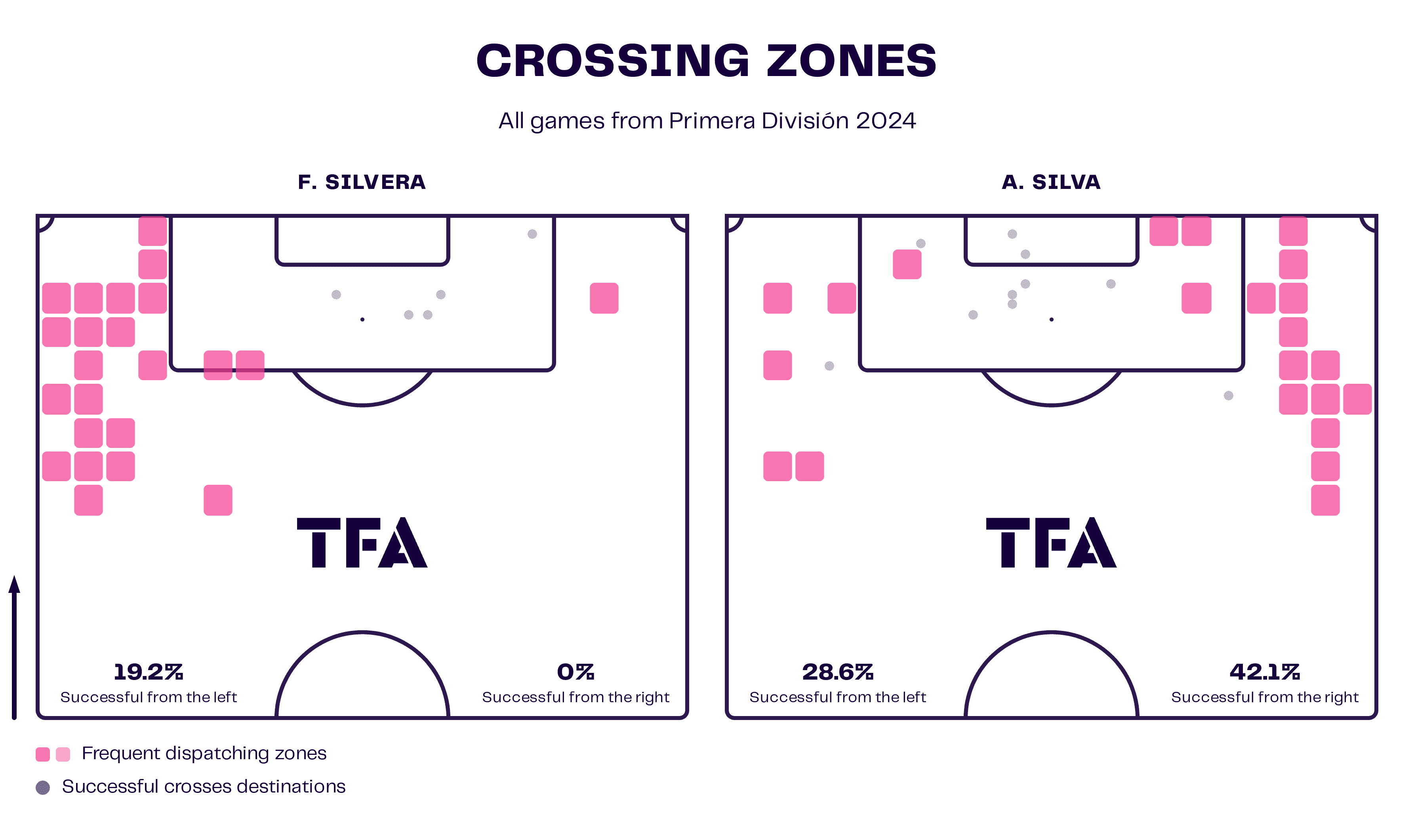
Firstly, as figure 6 displays, neither the left wing-back or right wing-back are hesitant to cross early from deeper positions. They’ll often receive the ball in a decent amount of space on the edge of the final third and, as we know, won’t be the most likely to take the opposition full-back on 1v1. As a result, they’ll typically try to use the space afforded to them to get the ball into the danger zone early.
This strategy hinges on the crossing quality of the wing-backs, and thankfully for Canobbio, his wide men have delivered so far this season, especially those on the right, Silva and Esteban González. The latter frequently features from the bench and has delivered impactful performances in a chance-creation capacity this term.
However, they won’t exclusively cross from deep and will generate opportunities to get into even more advantageous positions at points in the game, which will lead to them crossing from further upfield.
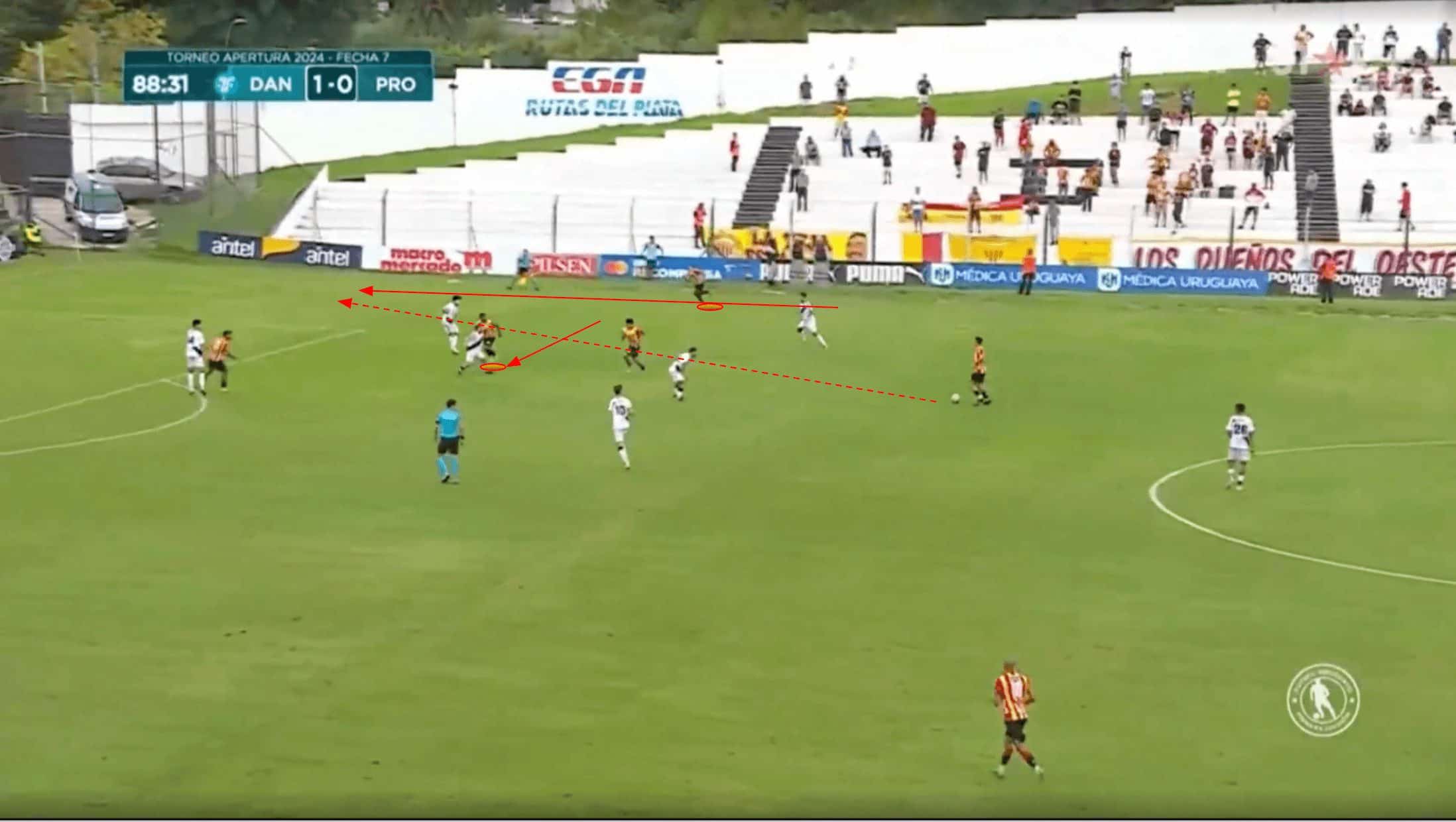
The deeper midfielders are often afforded too much space in this division, allowing them time to pick out incisive passes based on the movement ahead. The intelligent movement of Progreso’s attackers ahead of the deep-lying midfielders has, as a result, proven vital to the overall success of the team’s offensive strategy.
In this case, one attacker had been positioned out wide but moved inside, dragging the Danubio full-back into a narrow position with him and creating space for the right wing-back to exploit on the overlap.
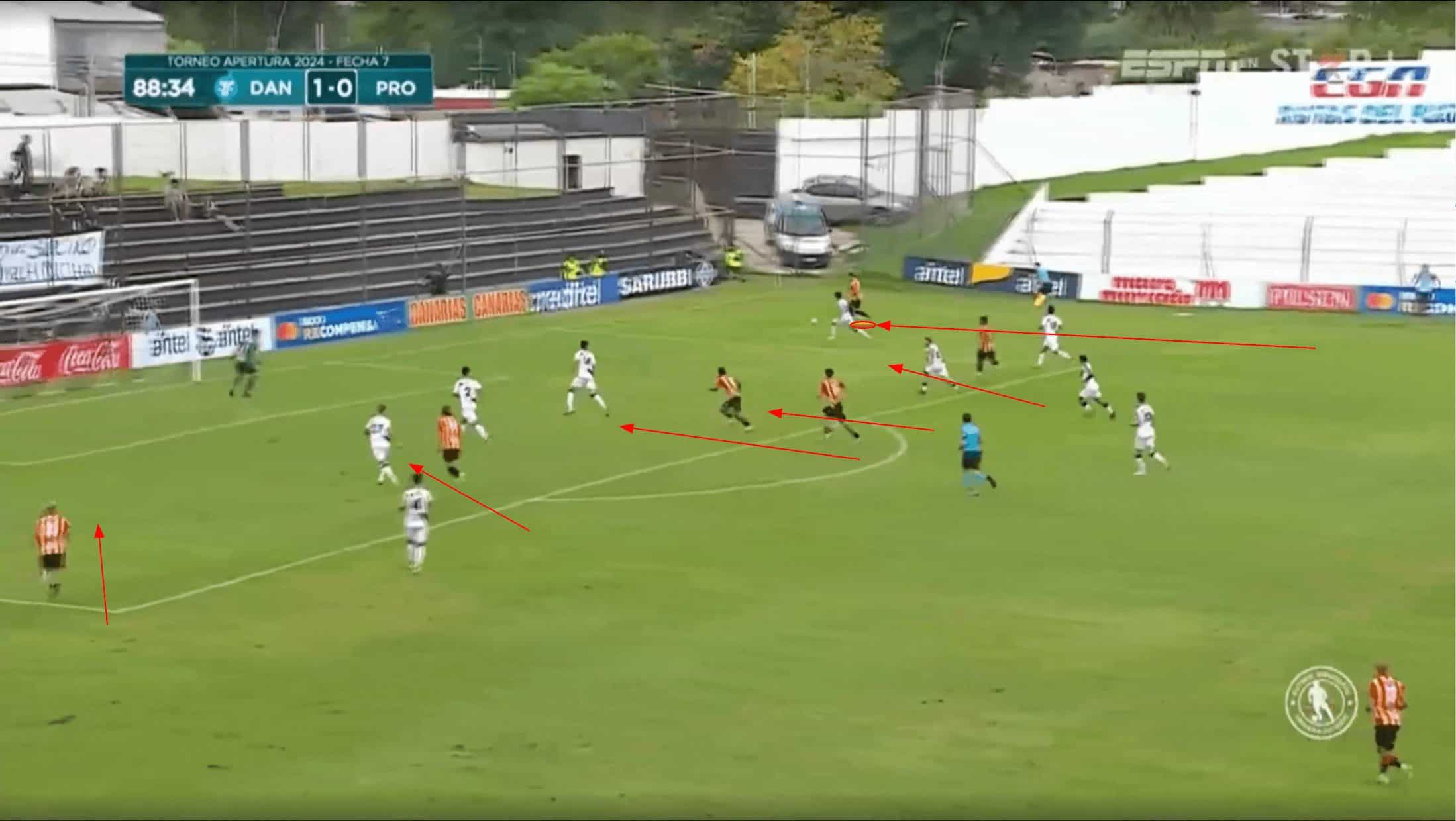
After delivering a well-weighted and accurate through ball for the wide runner, the wing-back is in behind the opposition backline on the wing with a chance to get the ball into the box from a nice advanced position.
As the wing-back prepares to cross here, it’s worth noting how the four centrally positioned attackers and the wing-back on the opposite side of the pitch all attack the box, creating options for the creator and giving Progreso a significant presence in the danger zone that the opposition will find tough to deal with—this is another common feature of El Gaucho del Pantanoso’s crossing game that has generated results in 2024.
Transitions
It’s worth mentioning at this point how those positioned centrally attacking the box also bear a responsibility not just to position themselves well to convert a chance inside the box but also to prepare themselves for a defensive transition in the event of a turnover.
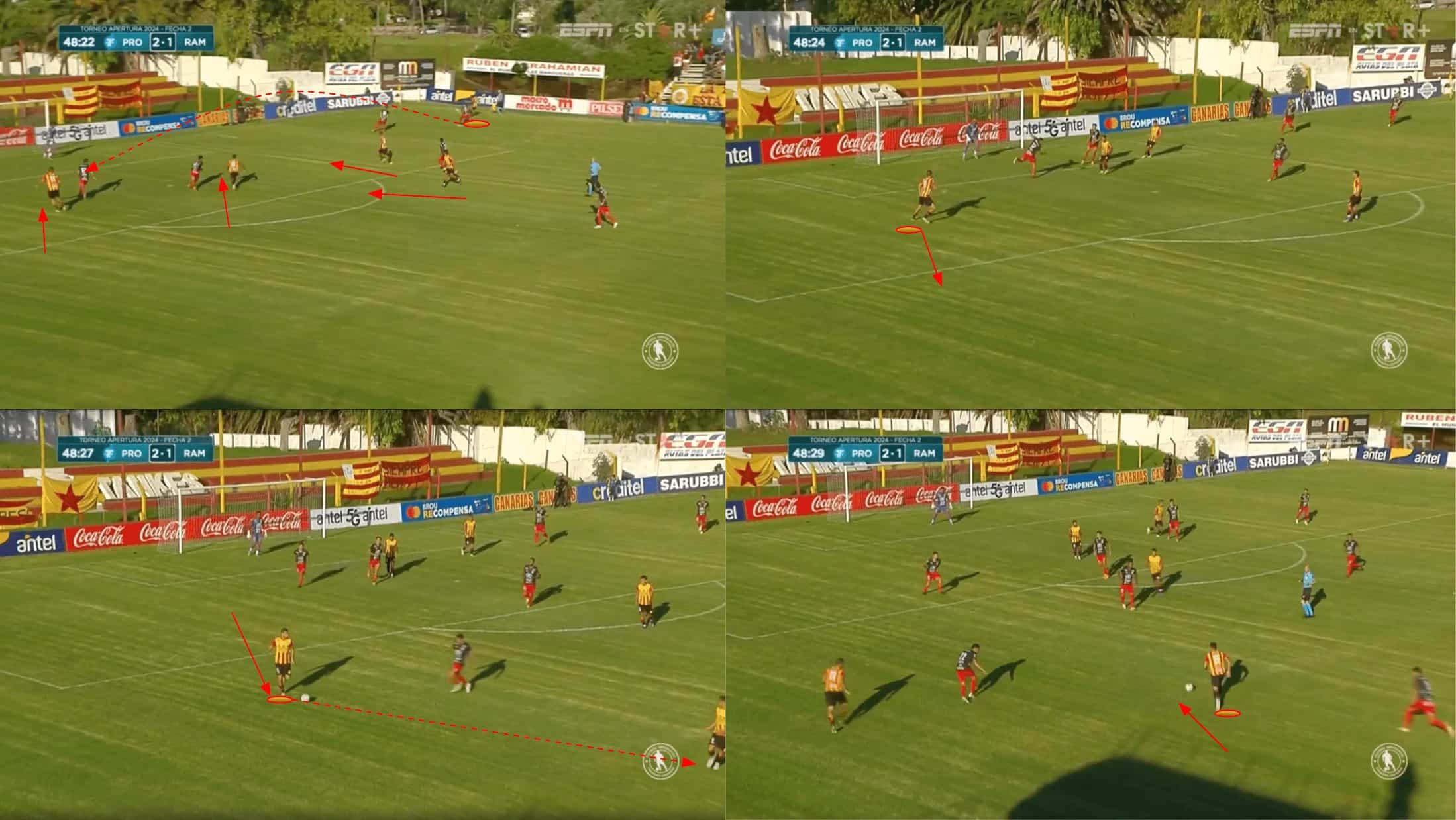
We see an example of that above, where the left forward stands off the nearest defender, allowing him to deal with the loose ball at the end of this attack, ensuring an opposition counterattack does not occur and leading to the continuation of Progreso’s attack, sustaining pressure on the opposition’s backline.
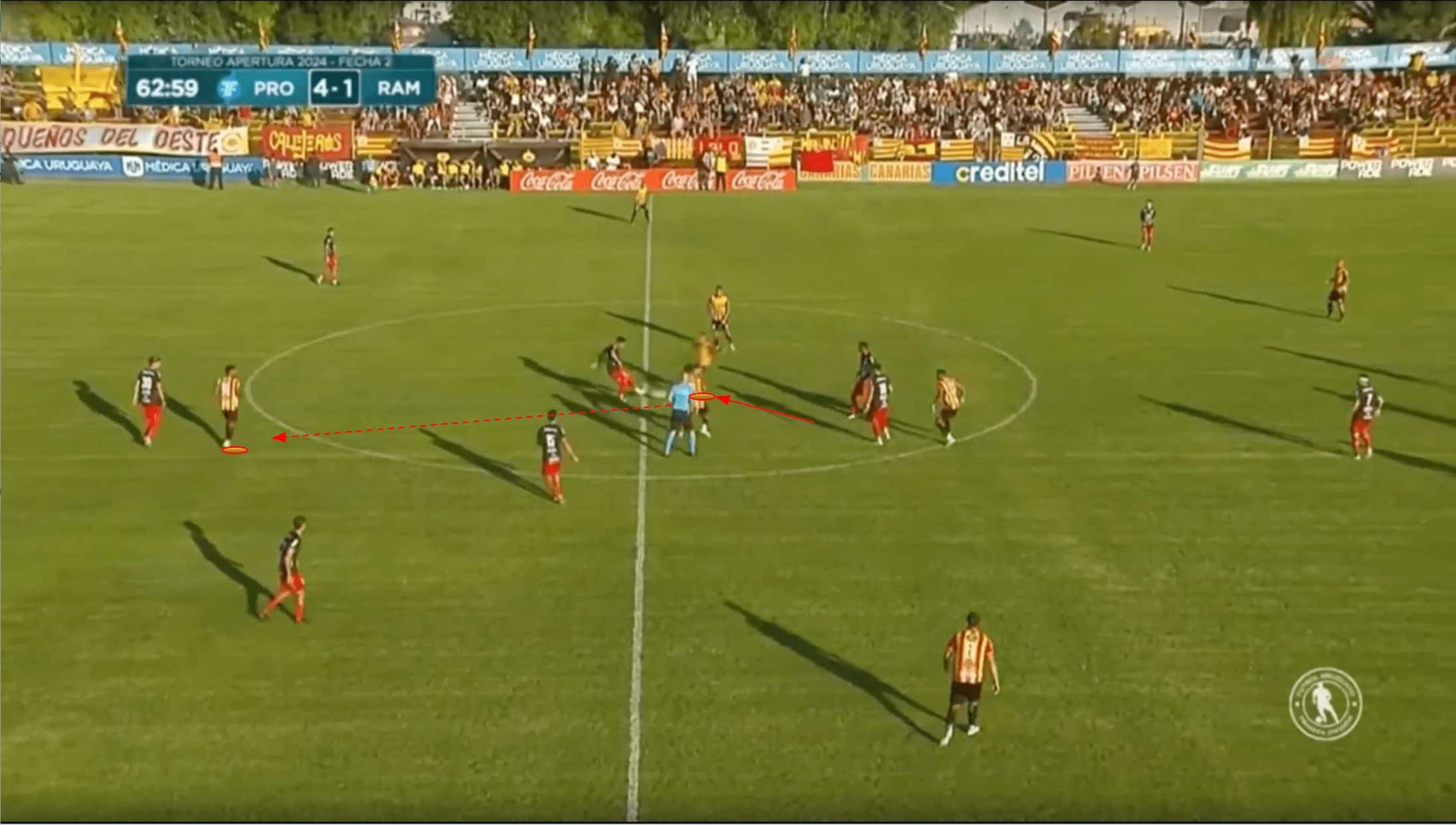
Conversely, Progreso have been quite dangerous in offensive transitions this term, with their wing-backs again playing a highly important role in this phase of play. We’ll analyse an offensive transition from their recent clash with Rampla Juniors to illustrate this point, and the passage of play begins with the turnover that El Gaucho del Pantanoso force on the halfway line here as the opposition had been attempting to progress towards their final third.
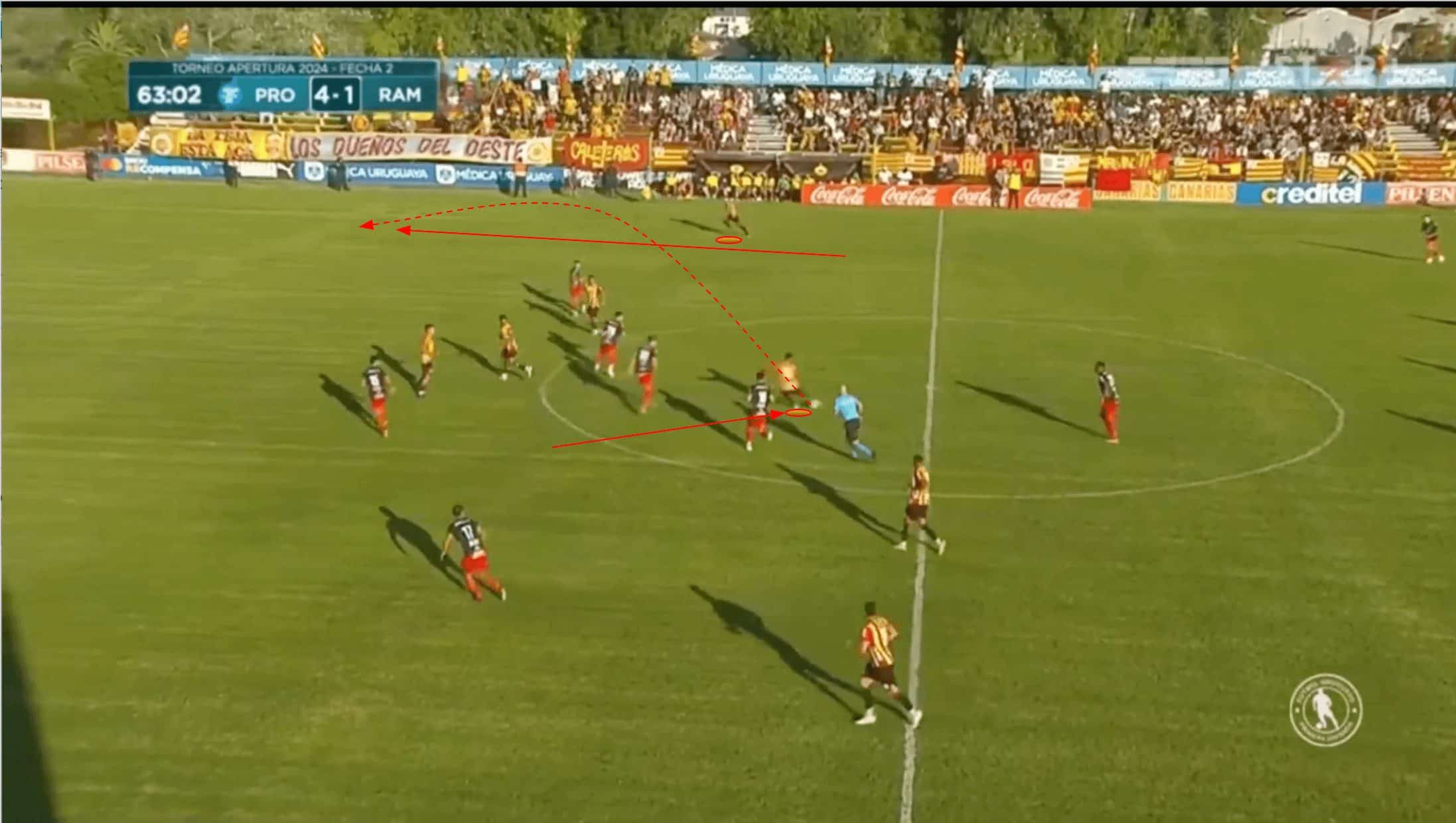
The ball bounces towards Progreso’s left forward who drops and takes possession, buying himself a moment to get his head up and decide on his next move. The decision is made easy enough by the wing-back bombing forward into acres of space on the right.
He’s able to get onto the end of the forward’s over-the-top through pass and move into a dangerous crossing position — providing a great example of how the wing-backs can prove very helpful in transitional attacks via their positioning, alertness and intelligent runs constantly looking to exploit space out wide and in behind the opposition’s defence.
Conclusion
To conclude this team-focused scout report, Canobbio’s side have thrived in offensive phases, particularly the chance creation phase, this term largely thanks to the role of their wing-backs within their 3-4-1-2 setup and how opposing teams have struggled to deal with the wide threat effectively while also being occupied by the central threats they pose.
It’s not just been settled phases of possession where Progreso have threatened, however, El Gaucho del Pantanoso have also been deadly in offensive transitions — again thanks in no small part to the key role their wing-backs play.
The newly-promoted side sit second and unbeaten after eight games of the 2024 season. Their manager, of course, deserves plenty of credit for this admirable achievement in getting the most out of his team, as do the players themselves for executing his tactical vision in such an effective way, with the wing-backs acting as the stars of the show. In order to stop them this term, it’s paramount opponents find a way to neutralise those wide men.





Comments